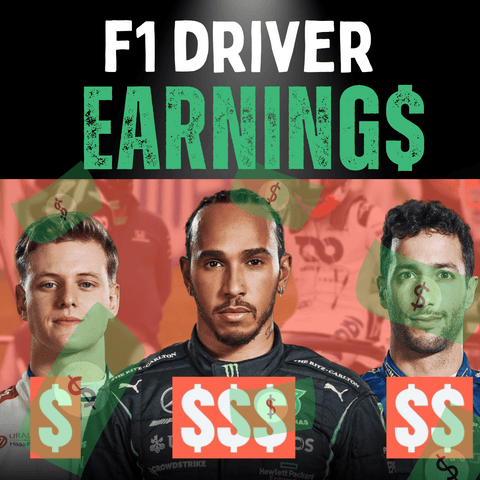
Published: 8.9.23
Updated: 24.3.25
Picture yourself behind the wheel, chasing the dream of Formula 1 glory. Age isn’t just a number here—it’s a story of grit, passion, and possibility.
Whether you’re a fan or nurturing a young racer, let’s explore the age dynamics of F1 and see if there’s ever a "too late" to join the grid.
What Age Is Too Late To Be An F1 Driver?
A Look at F1 Legends
Kimi Räikkönen: Racing Past 40
Kimi Räikkönen defied time, racing in F1 well into his late 30s and beyond. His career proves starting late or staying long is possible with skill and determination.
Related: How Old Are F1 Drivers?
The Best Age to Start
Many F1 greats began young, often around 7 or 8, building skills early. This head start helps them climb the motorsport ladder with precision and experience.
Why Start Young?
Starting early in karting gives aspiring F1 drivers time to master their craft. It’s like building a race car—every year adds horsepower to their skills.
Related: F1 on a Budget: Your Step-by-Step Guide
Young Stars vs. Seasoned Racers
Young Prodigies
Teens like Max Verstappen stormed F1, winning races before age 20. Their early start and raw talent set records and inspire new racers.
Older Champions
Veterans like Damon Hill won titles in their 30s, showing experience can triumph. Age brings wisdom, not just wear, to the track.
Related: How To Get Into F1 As A Fan
The Road to F1
Climbing the Ladder

Most begin in karts around age 8, moving through Formula 4, 3, and 2. It’s a decade-long climb to an F1 seat.
Career Path Breakdown
- Karting (8-15): Local to international races.
- Formula 4 (15+): First single-seater step.
- Formula 3 (17-19): Alongside F1 events.
- Formula 2 (18-21): Final prep for F1.
- Formula 1 (20+): The pinnacle, needing a Super Licence.
F1 Career Timeline
F1 Drivers Career Milestones
Lewis Hamilton
- 2007: First race
- 2007: First win
- 2008: First title
Max Verstappen
- 2015: Youngest racer (17)
- 2021: First title
Related: How Much Money Does a Formula Driver Make

Late Starters Who Made It
Damon Hill
Started single-seaters at 23, won the 1996 title at 36. Proof it’s never too late.
Jenson Button
Championship at 29 after years in F1. Persistence paid off.
Physical and Mental Prep

F1 demands peak fitness and focus. Early karting builds a base, but late starters can catch up with dedication.
Nutrition for Racers
A balanced diet fuels F1 hopefuls—think lean proteins, carbs, and hydration. It’s key at any age.
Women in F1

Women are shaking up F1, proving talent knows no gender or age limit.
Debunking Age Myths

Myth: “You’re too old after 30.” Reality: Experience often beats youth—think Fangio winning at 40.
Tech’s Role in F1

Simulators and data help all ages excel, leveling the field for young and old.
In Summary
Age in F1 is a canvas of stories—from teen prodigies to late bloomers like Räikkönen at 42. With no official limit, only a Super Licence stands between you and the track.
Ready to chase your F1 dream in 2025?
FAQs
What’s the youngest age to train for F1?
Karting starts as early as 4, but 8-14 is typical for future F1 stars.
Can late starters compete?
Yes! Dedication and training can make late bloomers shine.
Ready to Race? 🚀
Enjoyed our 2025 guide on F1 age limits? Dive into more at RiiRoo.com.







Share:
The 7 Steps to the F1 Drivers Academy - Unlock Your Racing Dreams
How Long Does an F1 Race Last? The Definitive Guide for Fans